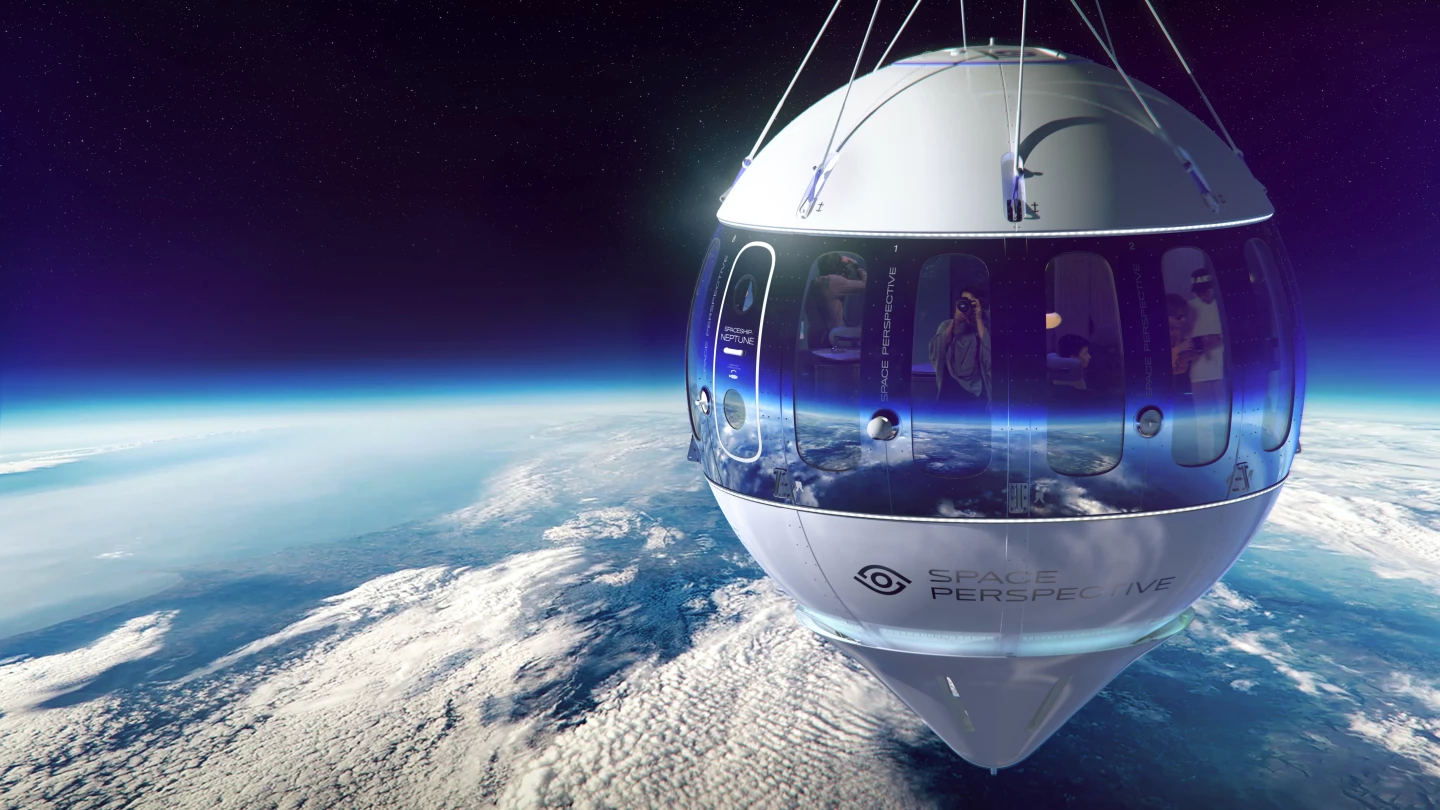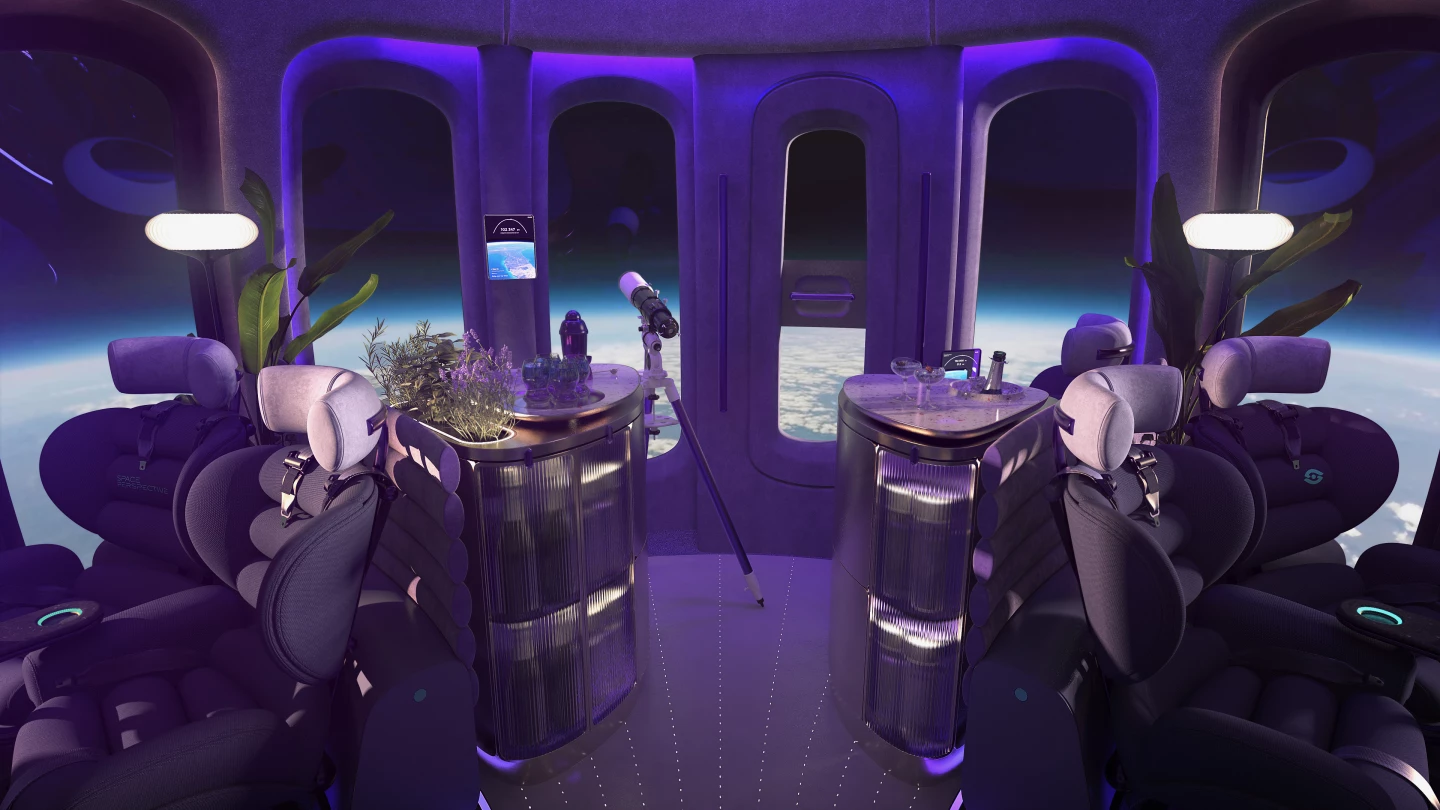When someone says they're planning on using a balloon to take tourists to the edge of outer space, you may wonder if they'll ever get past the conceptual stage. Space Perspective has gotten past it, though, by building a physical test model of its Neptune capsule.
We first heard about Florida-based company Space Perspective back in 2020, when it first announced its intention to take batches of eight paying passengers (and one pilot) on six-hour flights up to an altitude of 100,000 feet (30,480 m). At that height, the curvature of the earth and the blackness of outer space are clearly visible.
The passengers would ride in a pressurized capsule called Spaceship Neptune, which would hang beneath a hydrogen-filled "football stadium-length SpaceBalloon." It would take two hours to reach altitude, followed by two hours of sightseeing, followed by another two hours to descend. In order to do the latter, gas would slowly be released from the balloon.

The capsule would be outfitted with plush seats, a refreshments bar, a Wi-Fi communications system capable of live-streaming, 360-degree panoramic windows and a below-deck toilet. That level of luxury is only to be expected, given the fact that seats are already being sold in advance for US$125,000 a pop.
The just-completed test model of the Neptune is described as being highly instrumented and representative of "what the company will be flying once commercially operational." That said, it does lack the cushy interior lounge, as it's made solely to be the subject of multiple test flights. The first of those flights will be uncrewed, followed by crewed flights planned to take place later next year.

"The entire company is hugely motivated by reaching this milestone together and seeing Spaceship Neptune come to life before our eyes so spectacularly," said Space Perspective founder and co-CEO Taber MacCallum.
The company is also reportedly nearing completion of the Marine Spaceport Voyager, a ship from which the flights will be launched, and which will retrieve the capsule and balloon from the ocean after splashdown upon return.
Source: Space Perspective







